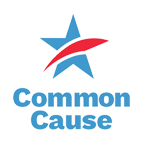Designing Democracy: The Future of Civic Engagement
- Public Policy
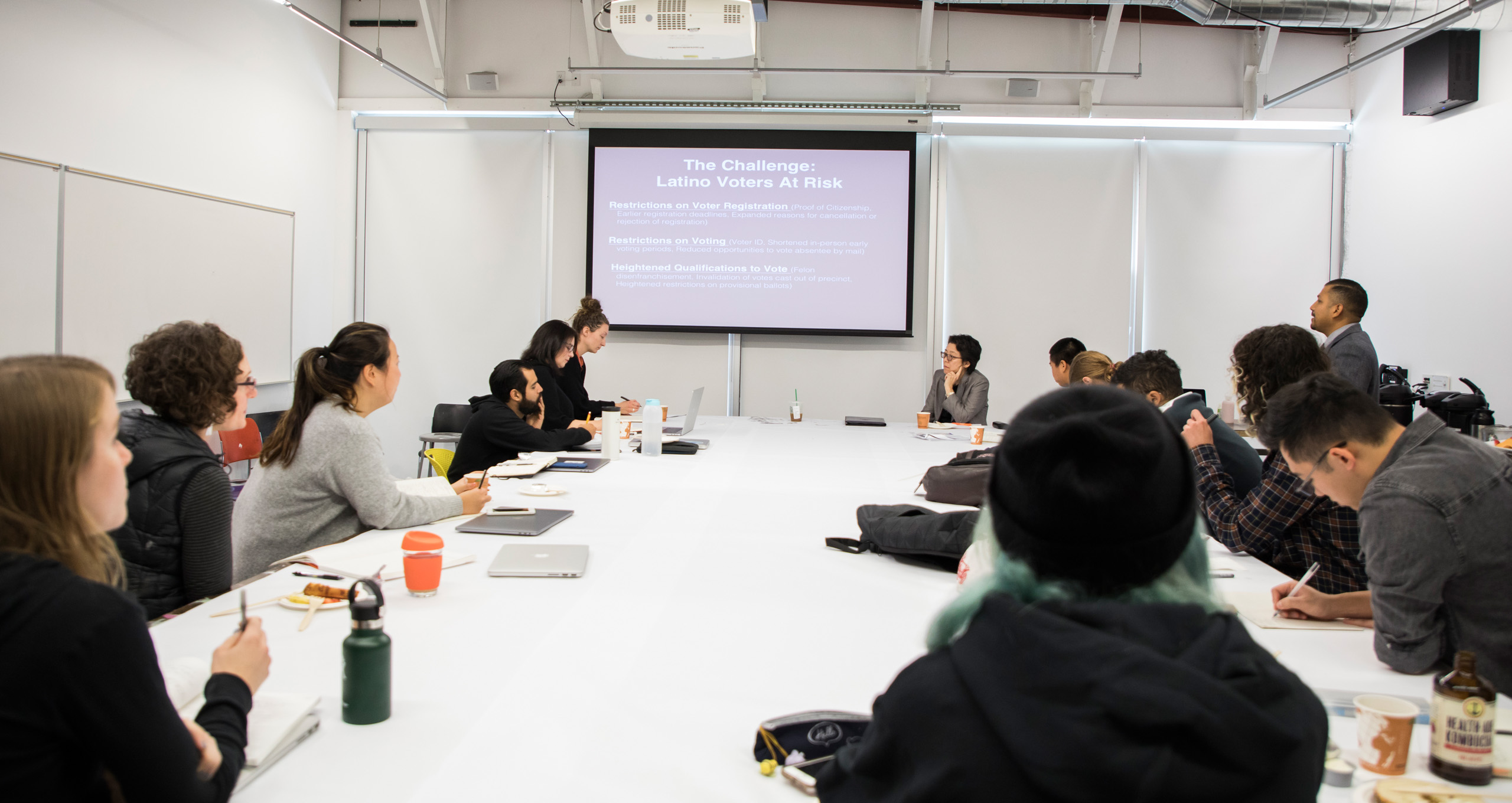
Spring 2018
In partnership with California Common Cause, this Designmatters studio challenged interdisciplinary students to explore the past, present and future of democratic participation and civic engagement by examining the history of United States elections, voting rights, civil rights, media representation and power. Gaining insights from experts, gathering field research, and participating in local canvassing activities and citizen ethnography, students created campaigns, collateral and experiences aimed to increase voter participation and citizen empowerment in and beyond California.
This project was made possible in part by support from the Designmatters Educational Program Grant from the Autodesk Foundation as well as a grant from the Sillicon Valley Community Foundation.
Project brief
In this Designmatters studio, interdisciplinary ArtCenter students imagined the future of the democratic participation and civic engagement in the United States and offered interactive campaign concepts that could increase voter participation in and beyond California. Students examined the landscape of the U.S. elections as they digested research, gathered field work and heard first-hand from knowledgeable experts across the political spectrum, including studio partner, the citizen lobbying group California Common Cause. Students designed campaigns, collateral, systems, experiences and spaces that would resonate with voters of all ages, inspiring them to participate in civic opportunities and infusing them with the power of the political process.
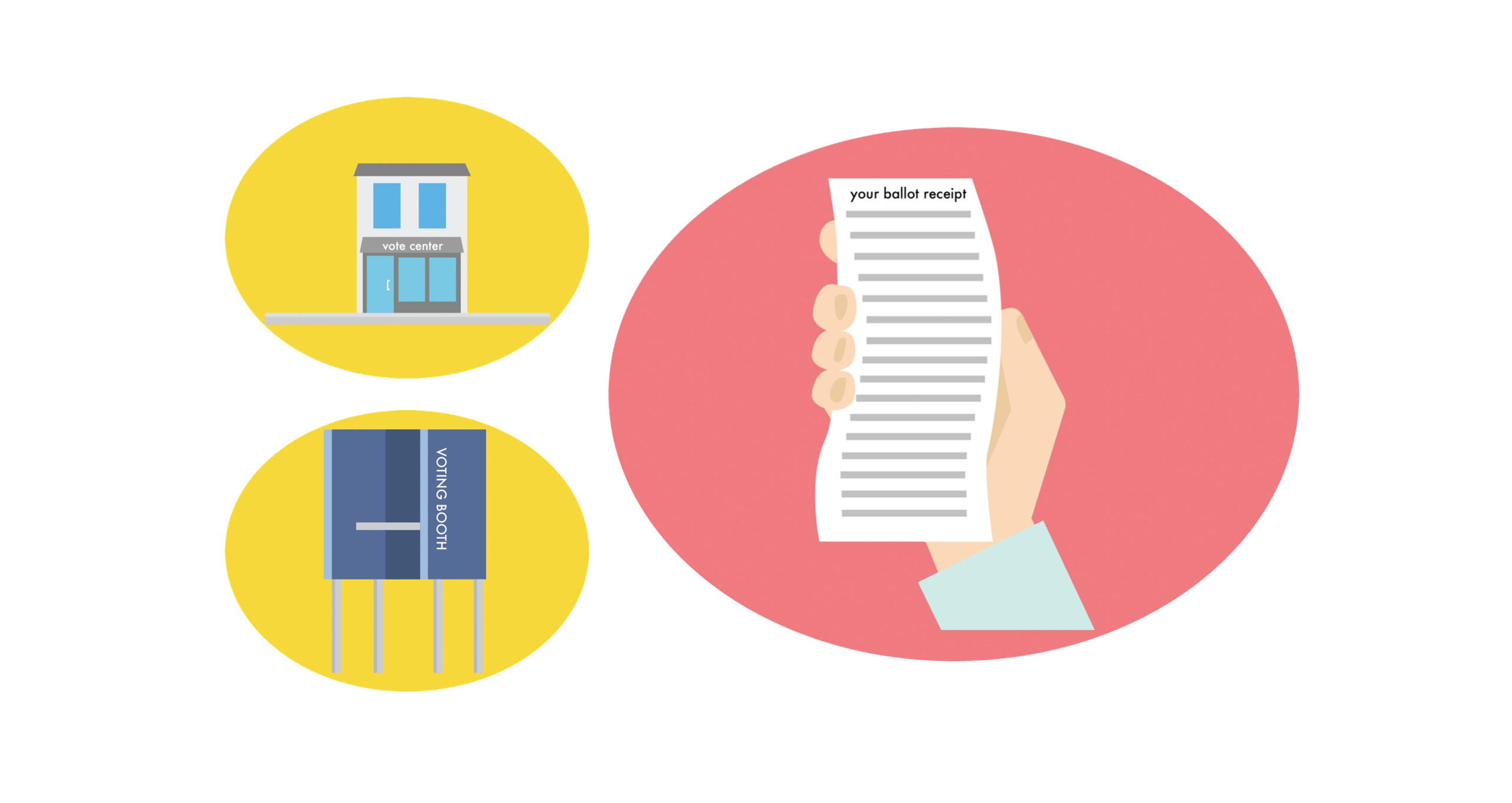
“We forget that, historically, much of the modernist design that ArtCenter students and faculty hold dear came out of polarized political environments. So what I see here today is very much part of a long heritage of artists, designers and media-makers plugging into their environment and making something productive out of it.”
– Arden Stern, Assistant Professor, Humanities & Sciences
About Common Cause
A nonpartisan grassroots organization founded in 1970 as a people’s lobby, Common Cause serves as an independent voice for change and a watchdog against corruption and abuse of power. With more than a million members along with supporters and offices in 35 states and Washington D.C., the nonprofit seeks reform at all levels of government through grassroots organizing, coalition building, research, policy development, public education, lobbying and litigation.
Research and Project Development
At the studio kickoff, students met with California Common Cause representatives Kathay Feng (Executive Director of California Common Cause and National Redistricting Director) and Sylvia Moore (Southern California Organizer) who provided insights about their work especially how they activate citizens to respond to issues and goals, both locally and nationally.
Students learned the history of Common Cause and their methods of effectively reaching communities through stories with emotional connections. Often times, big complex problems make many feel helpless and that situations are hopeless. Presenting people with small steps for involvement can lead to a larger sense of empowerment and engagement.
Students learned the balance is to not overwhelm but to appropriately advocate a sense of urgency that will encourage citizens to ask, “How can I help?”
Emotional connections can even expand to younger generations who, even though they cannot officially vote until 18, can play a part in the political process as advocates, or being a poll worker/observer on election days.
One of the overall takeaway messages the students learned: Facts and words only go so far, but visuals, stories and human connections are needed to move audiences to take positive action. There are many opportunities to design a reform movement that challenges the apathy and cynicism of the day.
To help them target their efforts throughout the studio and present them with an overreaching goal, students as a whole defined the characteristics of a healthy democracy.
Students described a healthy democracy in which:
- Everyone participates and all voices are represented
- Media reflects all voices fairly
- Everyone can run for office and there is a level playing for political participation
- There is transparency in governing
- Money does not determine outcomes
- Voting is easy
Students had an opportunity at a later session to hear a panel discussion/presentation which broadened their knowledge about issues involved in voter participation especially within ethnic communities. Along with staff from California Common Cause, panelists included: Ely Flores (National Association of Latino Elected and Appointed Officials at NAELO Education Fund), Deanna Kitamura (Project Director of the Voting Rights Project at Asian American Advancing Justice – Los Angeles), and Dr. Raphael Sonenshein, (Executive Director from the Pat Brown Institute for Public Affairs based at CSU Los Angeles).
Students learned about the largest ethnic group populations in Los Angeles County: African Americans, Asian and Pacific Islanders Americans, Latino Americans and those of Jewish heritage.
Students listened to the challenges faced by Los Angeles ethnic communities, especially the practice of redrawing district boundaries for political advantage or gerrymandering. The panel discussed how data and polling can be easily manipulated and encouraged students to always look for polls and data results that aren’t connected to a specific point of view or agenda.
The panel explained how mobility – getting to the polls – can be a big issue in many communities; they also discussed the differences between what motivates older and younger voters as well as how candidates’ personalities can be more influential that the public issues they support.
Dr. Sonenshein spoke on broader terms about voting issues and reminded students that mid-term elections usually brings out the lowest voter turnout among all groups and young people. He encouraged students to consider the gender and religiosity of ethnic groups as forces that can possibly motivate voters. He also explained that three big emotions typically drive people to the voting booths: fear, hope and anger.
Students broke into groups to generate emerging concepts considering a specific target user groups. In addition to being guided by secondary research/resources, student teams brainstormed field research opportunities that could support and inform their final project.
Throughout the studio, students were required to write short reflective blog posts on weekly topics.
Out in the field, teams employed qualitative research methods, discussed issues, engaged with community members and made vital observations that could fold into their ideation and prototyping. They initially were required to interview at least 10 people, five of whom needed to be complete strangers; more interviews would be conducted throughout the course of the studio as their projects evolved.
Students engaged ethical research practices during their fieldwork, taking appropriate steps to protect confidentiality, minimize risks, and increase benefits to the participants.
Independent research took teams to local libraries, homeless service centers, school cafeterias and student lounges to engage with a variety of subjects. Students also reached out and interviewed subject experts who could also help inform and direct their overall vision.
Field testing rough prototypes allowed students to discover flaws which helped them readjust thinking and ideation possibilities. Sometimes, expectations needed to be addressed and concepts were altered, refined or, in some cases, scratched.
At the midterm presentation, student teams shared their research findings and rough prototype models, explaining how their thinking that brought them to this point.
Teams presented a question to be addressed that often involved a user group, followed by research they facilitated, methods they used to collect data, and preliminary analysis/conclusions. Students also described insights they developed during the process pointing to specific details and examples. A bibliography, secondary research material and references were also necessary components.
Honest critiques and practical suggestions from ArtCenter faculty, fellow students and Common Cause representatives invigorated student teams with information and direction needed to re-hone and further shape their project design forward.
Throughout the course of the studio, students were continually engaged in research, retooled prototypes and updated iterations between primary field work and secondary sources which supported their project’s forward evolution.
Additionally, teams often broadened the scope of their research and ideation, considering how to possibly incorporate Virtual Reality (VR), Augmented Reality (AR) and other contemporary burgeoning technological experiences into their projects.
For the final presentation, teams would include at least three possible project directions for their given target user groups and show how all elements – research, interviews, etc. – brought them to their specific conclusion and direction. Students also offered practical suggestions for possible next steps beyond the studio needed to bring their conceptual designs closer to reality.
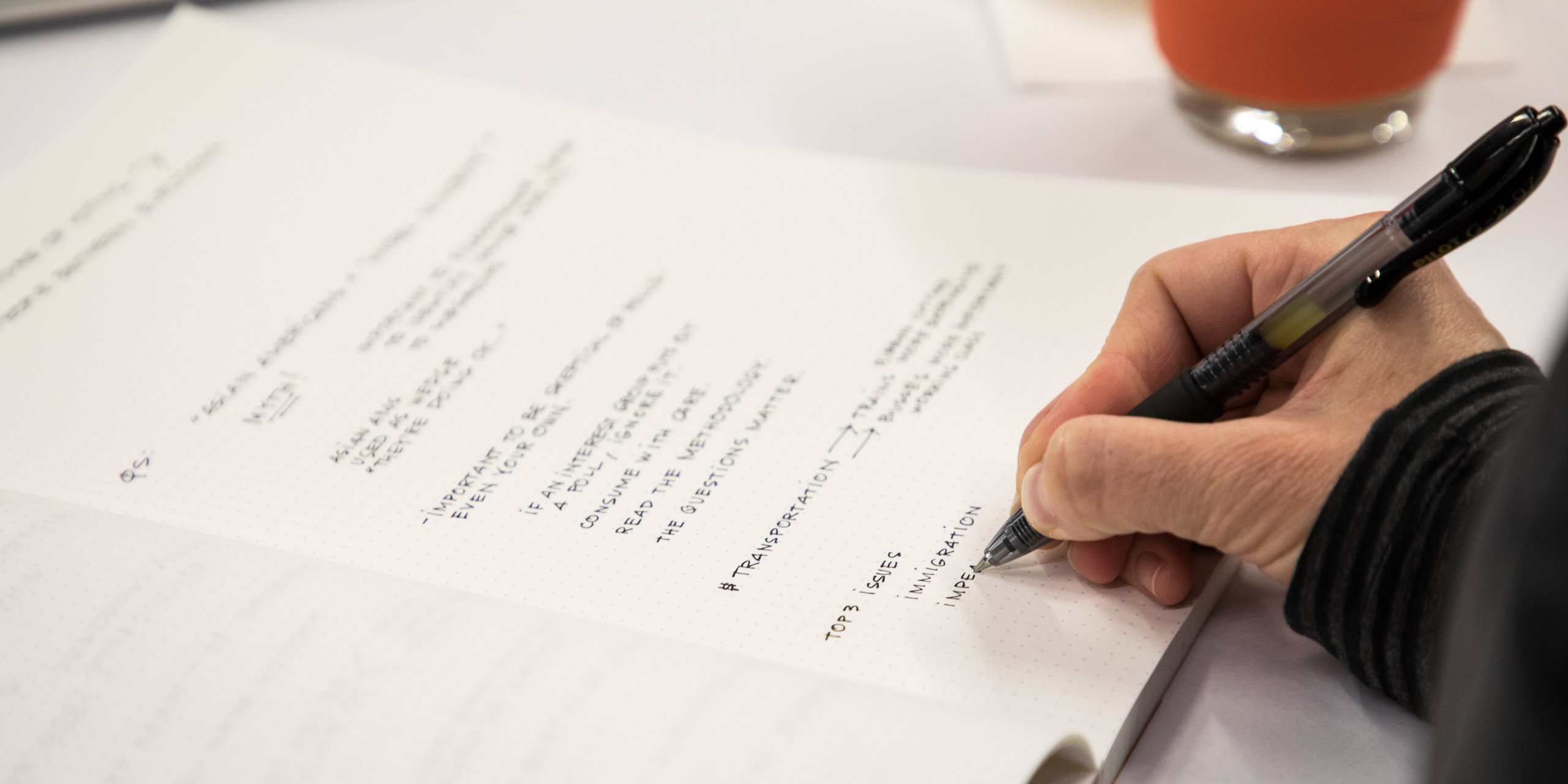
“We prompted the students think about questions they might not otherwise be asking, and supported them in thinking through the implications of their questions. We also worked with them to achieve a certain critical distance from their own work; often you can be circling around an idea but just can’t quite see it.”
– Candice-Leigh Baumgardner, Associate Professor, Humanities & Sciences
Outcomes
 close
close
Thrive Card Game
Read moreDaniela Chavez, Steve Cheung and David Hollo
With a goal of helping youth identify the information and skills necessary for future democratic participation, this game engages civic lessons and education through the power of play.
This collaborative card game teaches political roles, critical thinking, proper debate etiquette, voting participation and basic democratic principles as well as how to consider points of view in an ever-changing world. The complexity of the game and number of components increases as players mature and advance their skills.
The game is divided into three key concepts: players, government (elected representatives) and the world (events) with players balancing individual goals with that of the overall game. Like other popular role-playing card games, players and representatives interact with each other – and event cards can trigger new directions and challenges that must be handled.
Game pieces and cards can exist online with educators downloading items as needed; a nonprofit foundation could also manufacture and distribute the game.
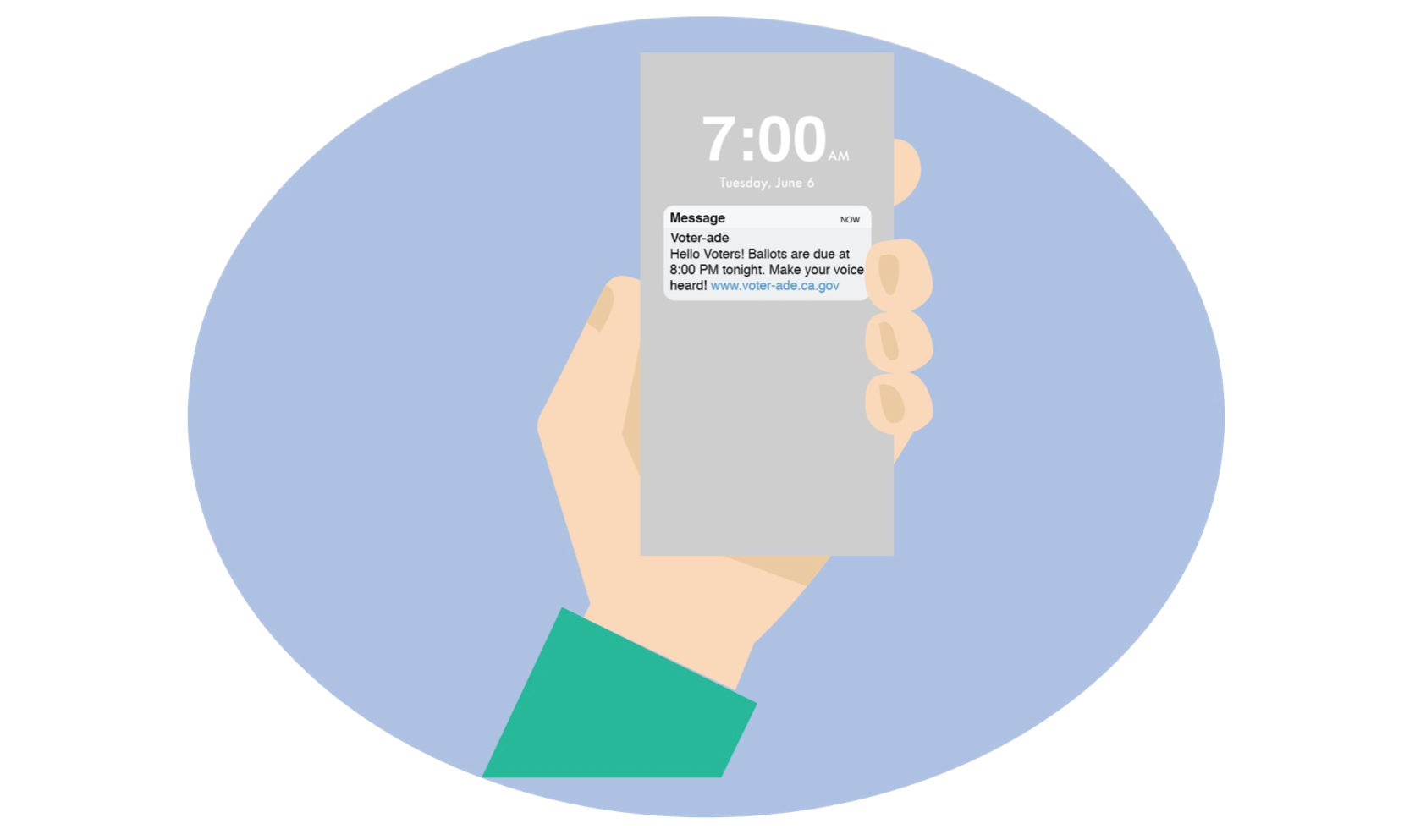 close
close
Voter-ADE
Read moreSarah Moon, Johnny Perez, Anna Meddaugh
To reinvigorate drop-off voters (registered voters who typically don’t participate), this new voting experience is supported by three prongs of Access, Design and Engagement (ADE) and employs familiar technology strategies targeted to engage voters before, during and after elections. Voters will have access to important and current civic information in a human-centered, easy-to-understand and easy-to-access design.
Prior to Election Day, voters can access a value match online interactive tool which helps determine how candidates and measures align to their own values. Up until voting day, voters are reminded about the upcoming election through short phone text alerts that can include voting locations/voting centers.
On Election Day, voters will get notification that their ballot has been received and counted via a printed tracking number which voters can verify online back at home. Finally, voters can choose how to receive election results whether it’s sent online, via text messaging or by standard mail.
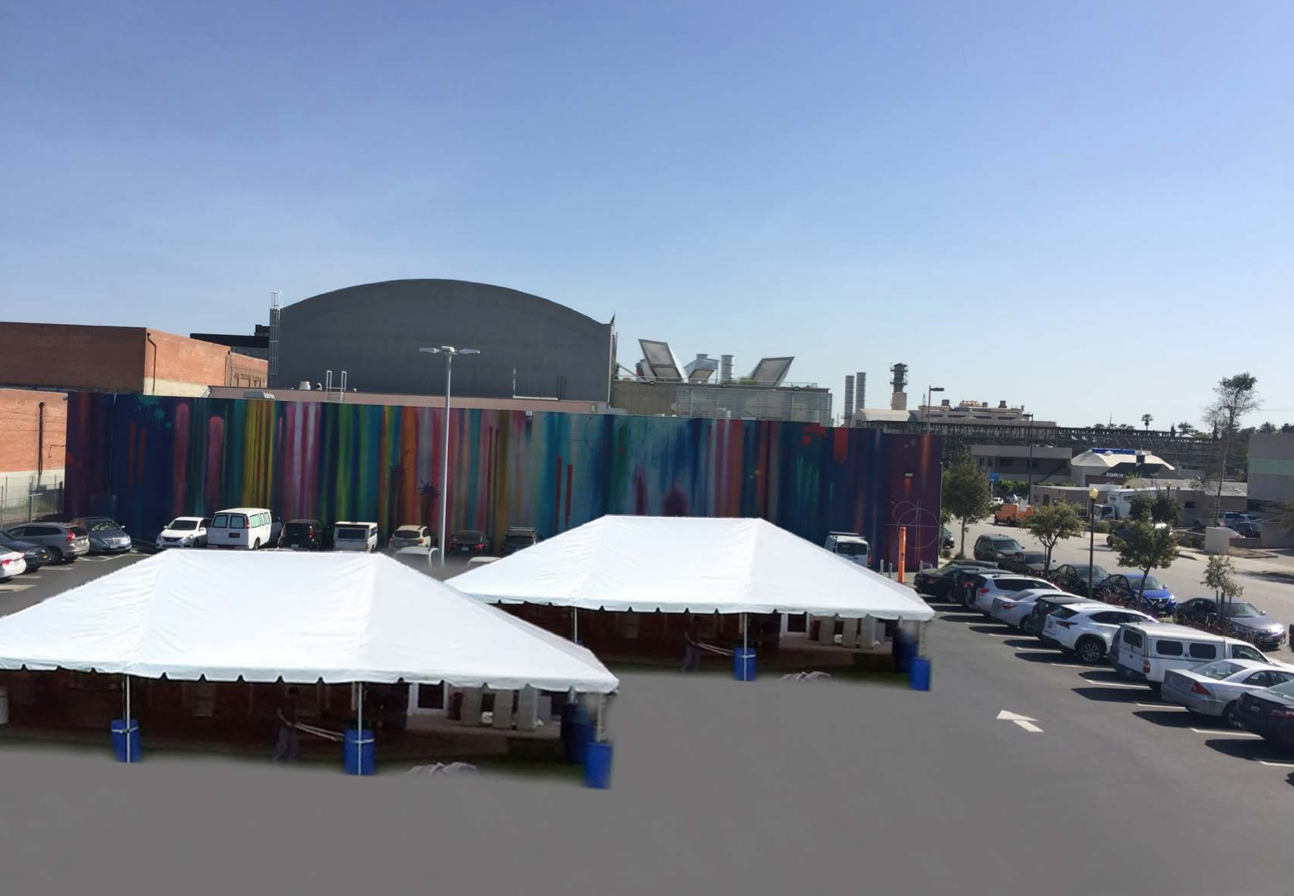 close
close
Pop-Up Reward Space
Read moreShef Herrin, Ina de las Alas, Robert Valle
To reach college students, many who are only eligible for absentee voting since they attend school outside of their home state and often don’t vote, this pop-up space presents an interactive group experience that features colorful and playful Instagram-worthy scenarios acting as a “reward” for requesting an absentee ballot; the only way to gain entrance into this coveted space is having requested a ballot.
The front-end of the pop-up space is the absentee ballot request center where students fill out appropriate forms and applications – computers, printers and scanners are configured to move the process along in a quick and efficient manner. Staffers answer questions and collect requests to be mailed out.
Staffers then welcome students into the pop-up space for a fun immersive experience that is customizable for location, weather and size. Possible activities could include creative workshops such as silk screening, painting, sewing, etc.; food tasting; a “silent disco,” VR; and other shareable, one-of-kind experiences that can be tailored for each campus. Next design steps would include collaborating with college-friendly brands for sponsorships.
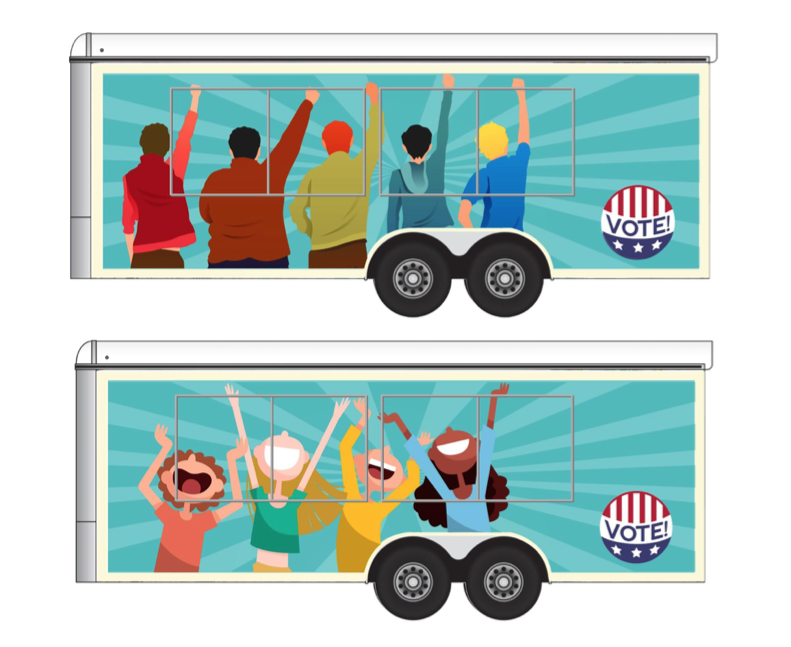 close
close
Voting Truck
Read moreSteve Seime, Robin Vane and Tae Hyun Kim
This mobile unit would provide the homeless with a voting location but could also offer essential city services and act as a humanitarian connection to those who have no address as well as other community members in low-income, under-represented areas.
Inspired by Idaho’s mobile voting truck, this mobile unit would travel neighborhoods offering the homeless (and residents) voting registration, information on upcoming ballot issues and candidates, and would be an official Voting Center where ballots can be cast. Auditory elements would announce as it enters the community.
This colorfully designed truck ultimately could be a community fixture as a programming space to offer local education opportunities, clinics, job placement, neighborhood resources and city services. Additionally, the truck could be used at college campuses, malls, flea markets and other places where crowds typically gather.
Next steps involve partnering with advocacy groups, local organizations and elected officials/supervisors to help cover the costs of creating and operating the vehicle with possible grant writing outreach.
“The students chose problems that were very specific and ones that are, for us in the realm of voting rights, some of the hardest problems to tackle. But they took them on with energy and a sense of hopefulness.”
– Kathay Feng, Executive Director, California Common Cause
Next Steps
After the Spring Term ended, students from Designing Democracy presented their concepts once again to a group of community stakeholders, representing organizations like the LA County Registrar of Voters, Disability Rights California, Asian Americans Advancing Justice, Future of California Elections and California Common Cause. Participants listened to students’ concepts and provided a variety of feedback, including ideas for funding sources to see their projects through to implementation, potential challenges that could arise in next steps, and opportunities for further presentation and visibility among decision-makers in Southern California.
In Fall 2018, the Center for Student Experience and ACSG will be offering voter education events across campus, including Constitution Day, pop-up voter registration booths, and workshops offering a general approach to civic engagement, understanding fake news, and learning about local issues, propositions and candidates.
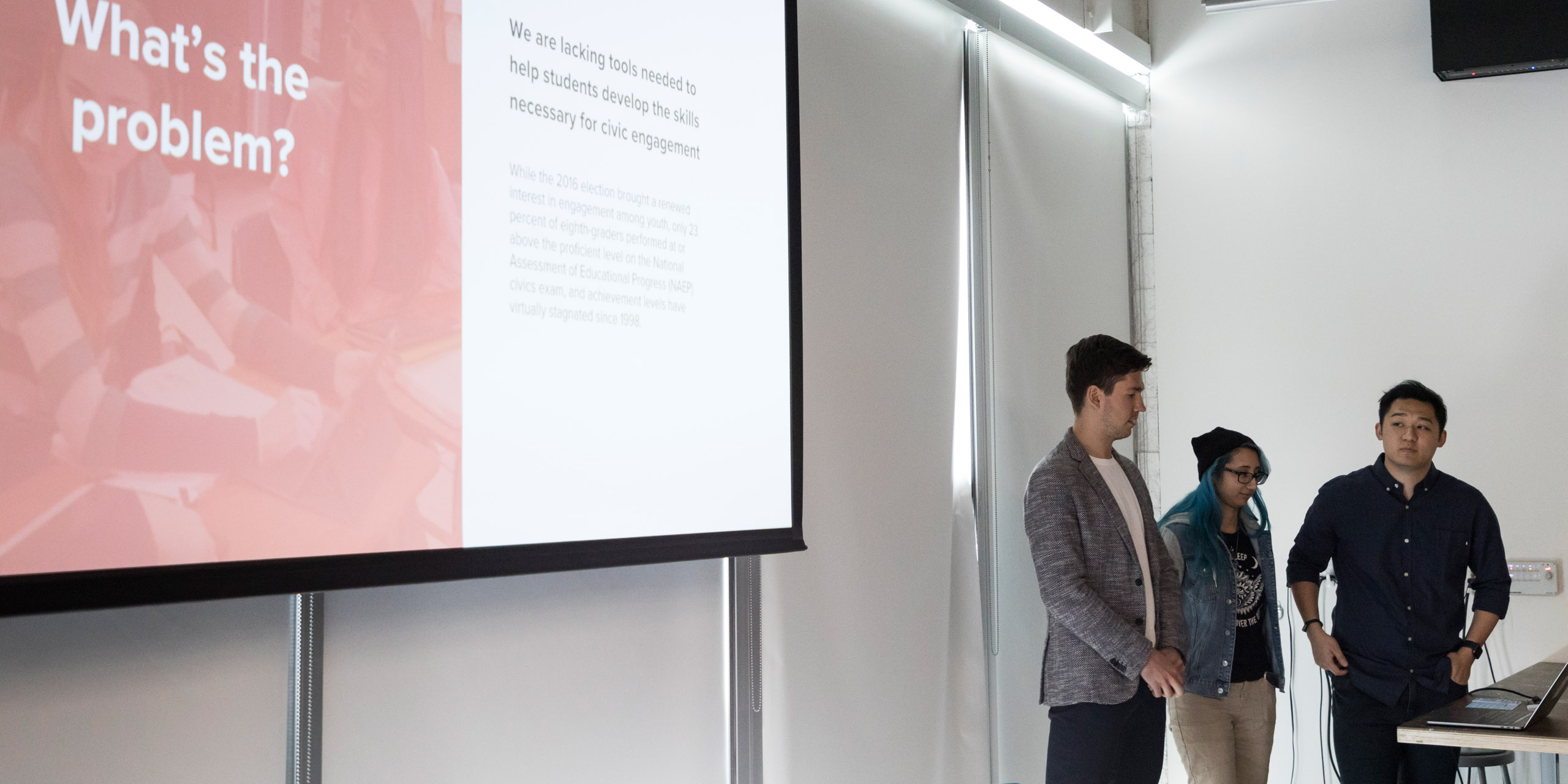
“This studio was about the intersection between arts and politics, and how to propel both to a constructive conversation instead of a destructive one that we have witnessed for that last decade now.”
– Shef Herrin, Student, Product Design
“The main things we took away from our first set of interviews is that people are feeling bombarded, uncertain and overwhelmed. It was striking how often we heard those messages. It was easier than I thought to talk to people about their voting habits; people were very open to talk and tell us what they think.”
– Anna Meddaugh, Student, Product Design
“I came into this class caring about the vote, and I left with a project I am deeply passionate about which focuses on the homeless. There is a large disconnect about the homeless with the public. The homeless told us that they don’t feel like they are part of any community, even their own. They feel they are yelling at the top of their lungs but they are not being heard by anyone. That lack of community was surprising and upsetting for me. These are people too. They have ideas, feelings and emotions. And they need to be listened to. They are citizens and members of our community.”
– Steve Seime, Student, Film

